Stuck writing a very basic media player in C, using SDL and ffmpeg libraries. Initially, followed the theory in this page to get an idea about the entire program and the usage of libraries. After coding from scratch, thanks to that tutorial and many other resources, finally I made my code work, using the latest libraries of ffmpeg and SDL (2.0). But my code lacks a proper synchronization mechanism (actually it lacks a sync mechanism !).
I still don't have a clear idea on how to synchronize the audio and video together as the theory provided in the link is only very partially correct (atleast when it comes to using the latest dev libraries).
For example, a sentence in this page is as follows :
However, ffmpeg reorders the packets so that the DTS of the packet being processed by avcodec_decode_video() will always be the same as the PTS of the frame it returns.
I am using avcodec_decode_video2() and the DTS of the packet is definitely not the same as pts of the frame it decodes (in general).
I read this very informative BBC report and it makes complete sense. I have a clear idea about PTS and DTS. But the PTS and DTS values that ffmpeg is using for packets and decoded frames is confusing. I wish there were some documentation on that aspect.
Can someone explain the steps to synchronize audio and video ? I only need the steps. I am quite comfortable implementing them. Any help is greatly appreciated. Thanks !
PS : Here's a screenshot of what I am talking about :

The huge negative value is, I assume AV_NOPTS_VALUE.